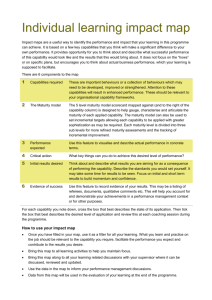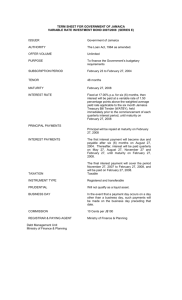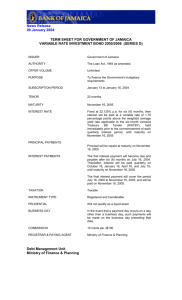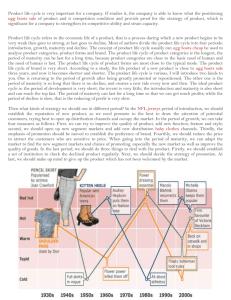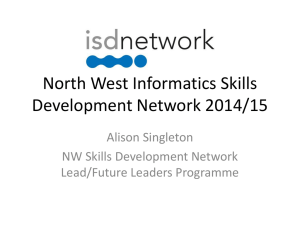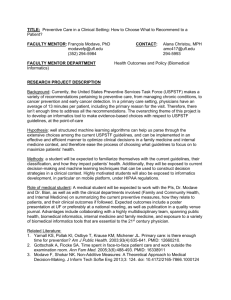slides
advertisement
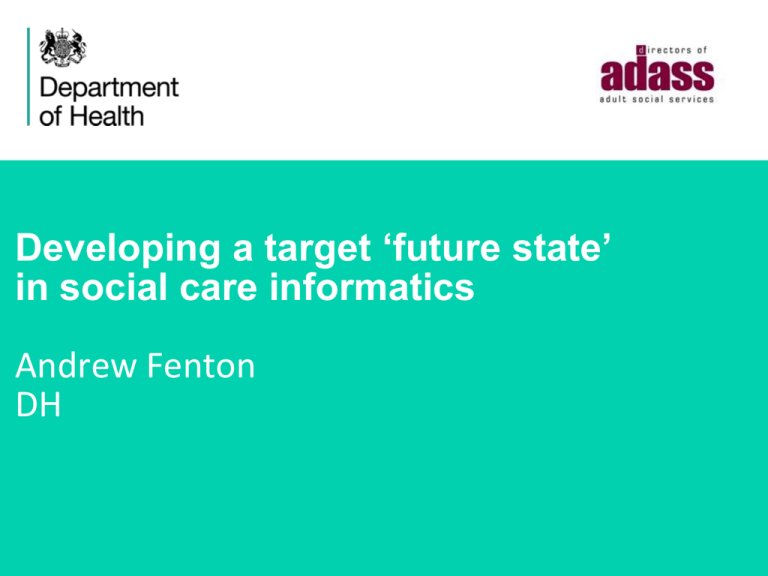
Developing a target ‘future state’ in social care informatics Andrew Fenton DH Opportunity? 2 Opportunity = Benefits? 3 Information & Technology can help . . . To Improve people’s lives 4 Where are we headed? Improved citizen outcomes and experience, the transparency agenda, integration across service domains, enabling citizen participation Transparency Transactions Participation Interoperability and trust 5 Numerous challenges • Culture change • Information Governance • Benefits case for investment • Identity management • Information standards – data collections, messaging etc • Common terminology & definitions • Open architecture & APIs across third party vendors & services • IT infrastructure 6 Across services within local government and the community Across service domains – NHS, local government, social care, public health, voluntary sector 7 Social care informatics scoping project Information Standards • Benefits case and supporting narrative for LAs • Identifying enabling ‘foundation’ standards • Identifying priorities and timelines • Implementing an optimal approach for standards development, adoption and implementation across LAs Client Level data • Benefits case for primary and secondary use • IG challenges – developing IG toolkit and guidance Quick wins – building on Care Act implementation, Information Sharing Project, Pioneers work, sharing assets across health and care, enabling ‘essential’ infrastructure 8 Building on progress so far • NHS Number • Secure email • Admissions & Discharge Notifications (Hospital and Social Care) – the ‘Adapter’ project in London • GP Referral to Social Care • Continuity of Care 9 DH – Leading the nation’s health and care We need an agreed target state 10 11 Social Care - Digital Maturity Model Goals: 1. Fully automated business processes 2. User portals transacting online 3. Digitally enabled assessments, reviews and transactions 4. On-line access to health and social care record 5. Joined up health and care ecosystem, including independent sector transferring data seamlessly 6. User in charge of their data 7. Wider use of bespoke apps to encourage self-care 12 12 Digital maturity model Information Standards, Tool Kits, Guidance Health and Social Care Information sharing: Secure email, encryption, structured messaging Fully Digital Mainly paper based 13 Partially Digital Full Integration Partial (across all Integration (within the care settings) organisation) Information for Citizens made accessible in a format they prefer: paper, email, smartphone, app, portal, etc. We need your help! To develop and establish in more detail and at a local level: • What is the target state for information and IT enablement and what are the steps along the way that we must prioritise – what would success look like for citizens and how must we change to deliver? • For each organisation; where we are now and what must we do first, second . . . and so on • To develop a social care/local government digital maturity model that embraces variation and innovation 14 Discussion • Would a social care informatics and digital maturity index/ road map be useful? • If it was developed, initial views about what a social care informatics maturity index and road map would look like: Simple/ complex? Formal,informal? Transparency? • How could such a toolkit and be owned and adopted across England effectively? • If it isn’t a good idea, what other ideas could be looked at for improving and standardising information across social care? 15



